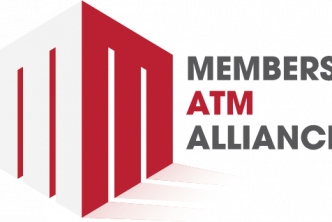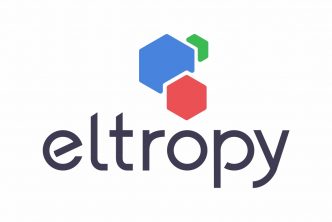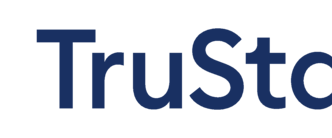By John Cassidy, Director, Credit Union System Relations | CUNA Mutual Group
While the pandemic shined a bright light on a number of latent societal issues, financial inequity was one of the most pertinent for credit unions. Driving right at the heart of the credit union purpose, the unavoidable fact that financial access in the U.S. is far from equal reenergized financial inclusion efforts across the industry.
Among the programs igniting this renewed spark is the Community Development Financial Institution (CDFI) Fund, which has become the single largest source of grant funding available to credit unions serving low income and financially underserved communities. To participate, credit unions must be CDFI certified or obtain the Certification within three years if they’re applying for a Technical Assistance grant. Although the Certification has existed for decades, misperception around eligibility, participation, and the benefits of a CDFI Certification have prevented otherwise qualified credit unions from pursuing it. To help solve for this, CUNA Mutual Group and Inclusiv – the only national association of CDFI credit unions – collaborated on the CDFI Awareness and Certification campaign to educate credit unions about the benefits of Certification and to create a network for existing CDFI credit unions to learn about and access additional resources. To complement this initiative, leaders from four successful CDFI credit unions participated in the panel discussion, Growing While Leading the Way on Financial Inclusion, during CUNA Mutual Group’s Discovery2021 conference to share how they have used their CDFI certification to help more members.
“We never thought we would qualify.”
A CDFI Certification can be earned by any credit union that predominantly serves low-income consumers and financially underserved communities. CDFI grants are meant to increase the capacity of credit unions to lend deeper in their markets and expand access to responsible financial products and services. Financial inclusion and community development are both sustainable activities and drivers of growth and relevance.
An additional benefit is a strengthened set of values-centric financial institutions that grow and deepen engagement with members. Median CDFI credit unions outperform median non-CDFI credit unions in earnings, lending, asset, and membership growth. Members Credit Union in Connecticut is one such cooperative doing well by doing good via its participation in the CDFI program.
The 10-employee credit union put most of its resources into low- and modest-income people and Hispanic immigrants, including undocumented individuals. As a result, the credit union is outperforming its peers in every way from membership and asset growth to new-low charge-off and delinquency levels.
Notably, leaders of the $40 million credit union assumed the cooperative would not be able to participate in CDFI. “We are located in a very high-income area with one of the largest gaps in the country between the haves and have-nots. We never thought we would qualify,” said Kathy Chartier, Members Credit Union president/CEO. “It really can help the long-term survival of a small credit union to become a CDFI.”
“It’s a very rewarding experience.”
Similarly, Canopy Credit Union in Washington discovered an entirely new line of business through its CDFI Certification. A $190 million financial cooperative, Canopy had no experience with indirect auto lending prior to the day a low-income individual in need of financing walked into the credit union. In helping that one borrower achieve the funds for a used car purchase, Canopy uncovered an important service they could share with many more underserved people in nearby neighborhoods.
That borrower was a community member with a disability who had stopped utilizing credit, and therefore, had no credit score to help him obtain a car loan. He visited Canopy to see if they could help. Because the CDFI-designated credit union believes a person is much more than a score, Canopy lenders worked with him and were able to provide the financing he needed.
Canopy President/CEO Charlotte Nemec tells the rest of the story: “He went to the dealership and told them about us and how we had helped him. That dealership reached out to us to learn how they could do more business with us. They have a lot of customers no other lender will touch – because they either have no credit or they have had poor credit. We are not an indirect lender, so this has been a new experience to work with dealerships, and it’s been a real boon for us. It’s a very rewarding experience from the members’ perspective and ours.”
Full support throughout the movement.
Credit unions that participate in the CDFI program have several influential allies on their side as they stand up their individual financial inclusion initiatives. Aside from CDFI funding, training, and collaboration with more than 433 other participating institutions serving 16 million members and combined assets of around $230 billion, they receive support and advocacy from a multitude of organizations, but Inclusiv is the recognized national authority in all things CDFI and community development.
Inclusiv was instrumental in establishing the CDFI Fund in 1994. With a permanent seat on the board of the national CDFI Coalition, Inclusiv sets an annual list of priorities for advancing the CDFI program. In 2021, those priorities included things like increasing appropriations to the CDFI Fund, achieving greater institution diversity in the CDFI Fund and fostering the formation of state CDFI funds to expand access to credit and affordable financial services.
CUNA Mutual Group joins a collection of credit union leaders that advocate for increased capital infusion for CDFI and Minority Depository Institutions (MDI), as well as Inclusiv’s CDFI Awareness and Certification campaign. Different teams within the company get involved in similar initiatives to solve for financial services access issues. The Corporate and Legislative Affairs team, for instance, is working with Congress and the state level to advance dialogue around the importance of broadband, or high-speed internet connections, in helping the underserved access financial services. CUNA Mutual Group’s Multicultural Center of Expertise ensures the CUNA Mutual Group products and experiences credit unions deliver to their members account for the principles of diversity, equity, and inclusion.
CDFI Certification for every strategic plan.
The CDFI Fund offers rolling applications and deadlines, so applying to be certified aligns with every imaginable strategic plan or roadmap. Likewise, the requirements for application are flexible enough to accommodate most credit unions’ structure and operations. An eligible applicant…
- is a legal entity at the time of application;
- has a primary mission of promoting community development;
- is a financing entity;
- primarily serves one or more target markets;
- provides development services in conjunction with its financing activities;
- maintains accountability to its defined target market; and
- is a non-government entity and not under the control of any government entity (Tribal governments excluded).
Financial inclusion is “the civil rights issue of our time.”
To encourage more financial services leaders to confront the inequities that exist within our global society, NCUA Board member Rodney Hood, famously called financial inclusion “the civil rights issue of our time.” As Inclusiv’s 2021 advocacy platform states, CDFIs are one of the most effective ways to channel capital directly into communities that have been hardest hit by the COVID recession and are the last to recover from economic crises.
Credit unions are called to help everyone achieve a brighter financial future, and CDFI Certification helps turn those values into action. This year alone, almost half a billion dollars in grant funding has been channeled to credit unions. To put this in context, that’s the amount of funding credit unions have received since the CDFI Fund’s inception in 1996. In addition, more than $2 billion in secondary capital investments will exponentially expand the capacity of these institutions to lend deeper in their communities.
The latest expansion of credit unions joining the CDFI network signals even more growth and engagement for the future. This powerful program is set to make an impact for decades to come in communities across the country.






